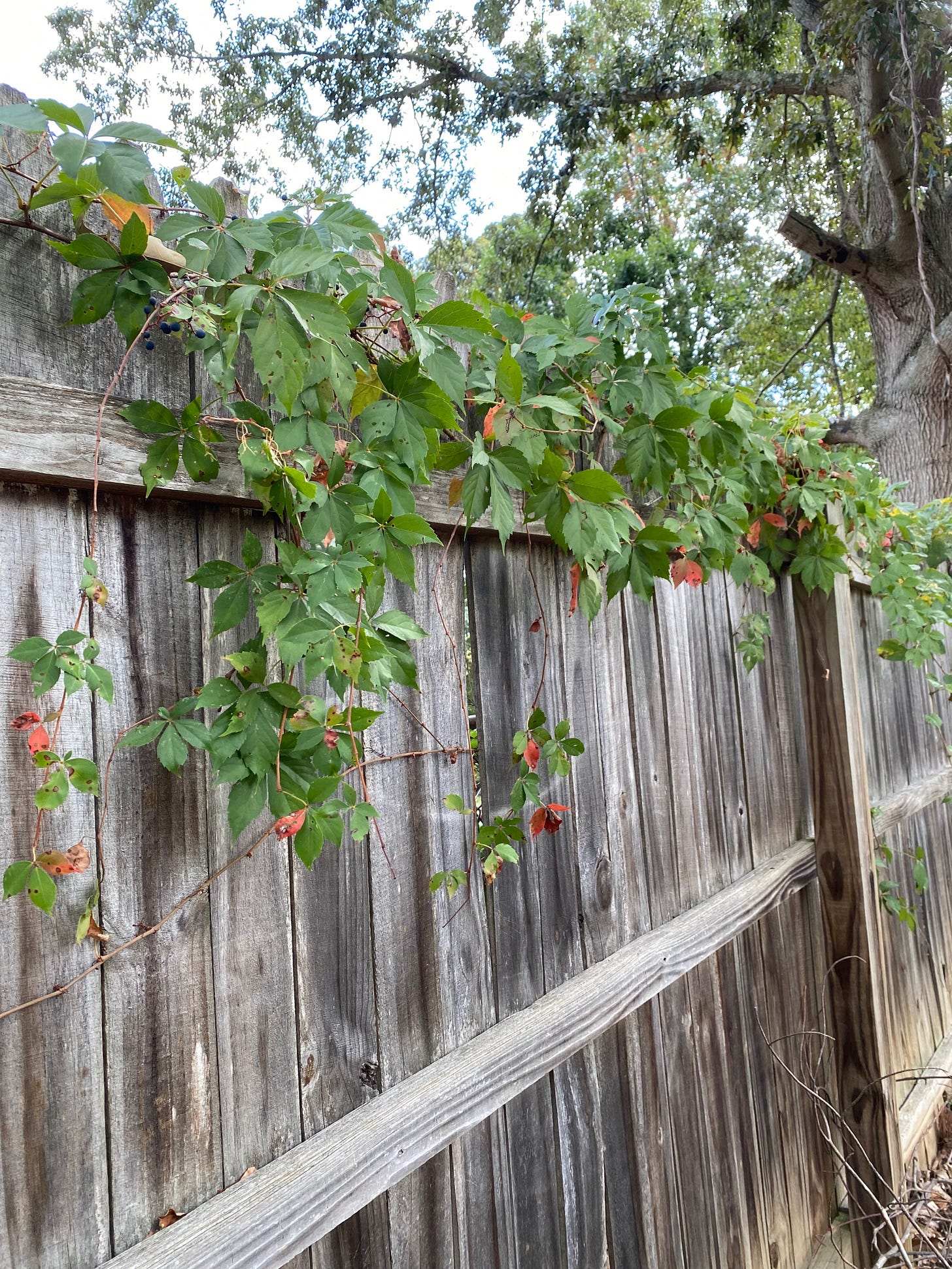This is parthenocissus quinquefolia, also known as Virginia creeper. It is ubiquitous where I live (which happens to be Virginia) and, according to Wikipedia, is native to eastern and central North America.
I promise, it isn’t poison ivy.
I’ve always heard Virginia creeper lumped into the same category with poison ivy, and English ivy, and all the destructive, irritating, kill-it-and-all-its-kin kinds of plants that people tend to have strong feelings about. However, I’m learning that perhaps Virginia creeper doesn’t necessarily deserve it.
First, a couple of interesting facts:
‘parthenocissus’ means virgin ivy, apparently in reference to the fact that this plant can produce seeds without pollination; ‘quinquefolia’ means five-leaved.
It is in the grape family of plants.
It is the larval host to several different kinds of moths, including something called a Grapeleaf Skeletonizer. What a delightful little goth moth. LOOK AT IT.
I didn’t know any of these things about Virginia creeper. What I DID know was that it gave my little brother a nasty rash once. More on that later.
We have some Virginia creeper growing on our fence, and a few days ago I was out in the yard looking at chicken feathers, and the bright red color on some of the creeper’s leaves caught my eye.

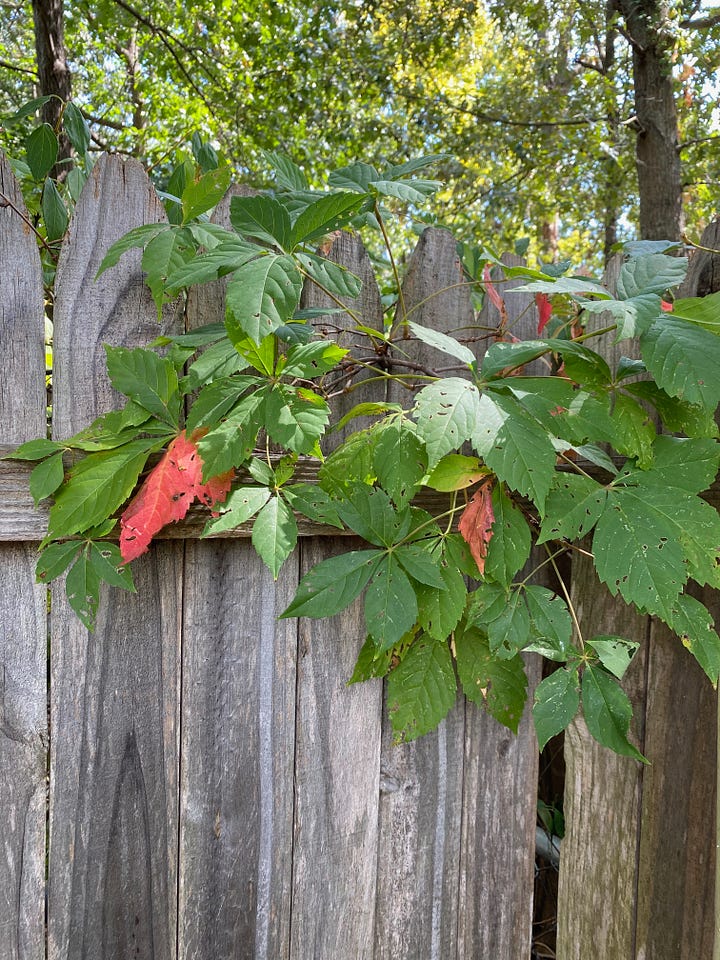
This plant has been a part of the landscape around me all of my life. How have I never noticed these vibrant color changes?
This is kind of tangent, but I stumbled across the concept of habituation recently, and I think that it applies here. Habituation is, roughly, the tendency to tune things out after repeated exposure. In my notes I have written, “decrease in response to stimulus after being repeatedly exposed to it.” So, for example, if you live somewhere with a lot of traffic noise, you probably don’t really notice the noise after awhile. It becomes part of the background, so to speak. I think that’s why I’ve never really noticed the Virginia creeper.
ANYWAY.
The Virginia creeper is a deciduous vine, so it will turn colors in the autumn and eventually drop its leaves. It’s only mid-September now, so I plan on paying attention and documenting the progressive color changes. From looking at internet photos, it looks like the color change can be quite dramatic, with the bolder colors appearing on the plants that get more sun exposure.

Like that. Look at that red!
Virginia creeper is an admirably hardy plant, and can grow in a wide variety of conditions, including areas with pollution in the soil. It grows very fast, and is ideal for ground cover in areas prone to erosion. It can adapt readily to just about anything, from full shade to full sun.
It produces flowers, too, in tiny little white clusters, although I missed that stage on the ones growing on our fence. I was able to capture some photos of the berries, though, which are tiny little beauties unto themselves.

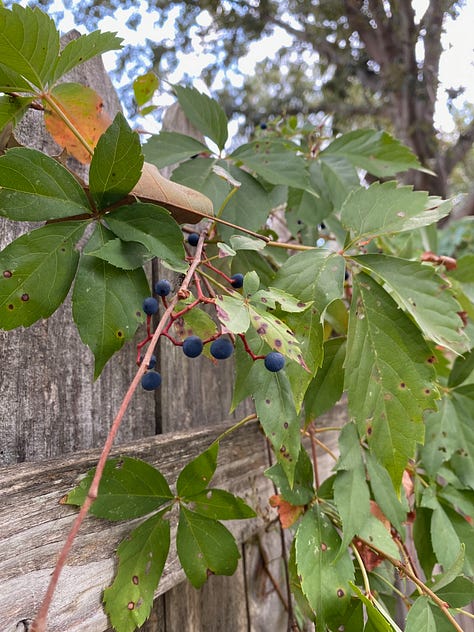
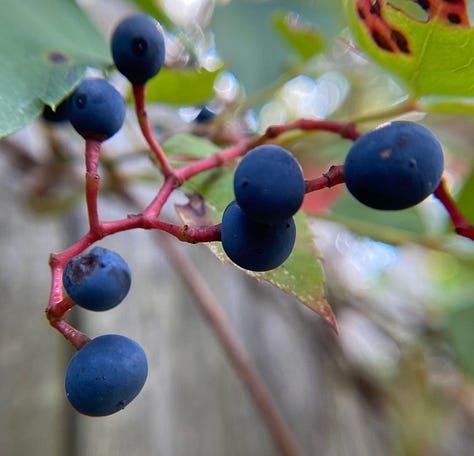
Notice the colors! The stems themselves are also a darker, richer shade when the berries are mature. The contrast is striking, and quite beautiful. These berries are a popular food source for many different types of birds, and some other animals like squirrels and chipmunks. You shouldn’t eat them, though. The creeper berries contain oxalic acid, which apparently isn’t poisonous, but can be extremely irritating to humans. Interestingly, a form of oxalic acid (calcium oxalate) is commonly found in kidney stones.
Calcium oxalate is also found in the other parts of the creeper plant, in a crystal form called raphides. This is what caused my brother’s skin rash. These crystals can cause irritation similar to poison ivy (although the offending compound is not the same). According to the good ole Wikipedia, calcium oxalate is extremely common in the plant world. Spinach, rhubarb, and cinnamon (among many, many others) all contain calcium oxalate.
I’ve never had a skin reaction to Virginia creeper, and I tend to have very, very mild reactions to poison ivy. It makes me wonder why - why some people have extreme reactions and others don’t. I suppose it may be similar to allergies, but it’s still pretty interesting to me. Does the Virginia creeper cause increased scale of irritation over repeated exposures, like poison ivy supposedly does? Is it actually a similar mechanism to an allergic reaction? Or is it something else? Is the reaction caused by the urushiol in poison ivy the same, biologically speaking, as the reaction caused by the calcium oxalate crystals in the creeper? What is it that birds and other animals have that allow them to ingest this plant safely? Are there any animals that DO have a reaction like humans?
Another tangent here: I love questions! I love wondering about things, and giving my mind the space to explore something. An essential part of this practice, for me, is avoiding the temptation to immediately find an answer, and being okay with the possibility that there may not be an answer to be found. I like to take notes, and do a quick kind of just-enough-to-verify-facts bit of research, and then let my mind wonder and mull over and speculate and contemplate, and write down whatever comes up. Give it time to simmer. Later I’ll go back and look up stuff, and try to answer those questions.
Okay, all that stuff is pretty interesting, but what really delighted me was the Virginia creeper’s little feet.
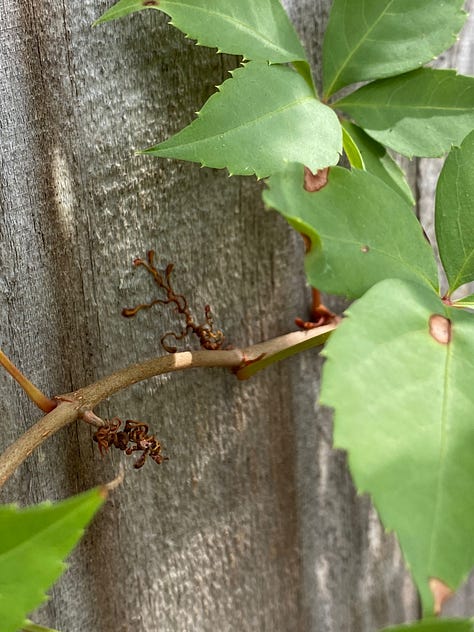


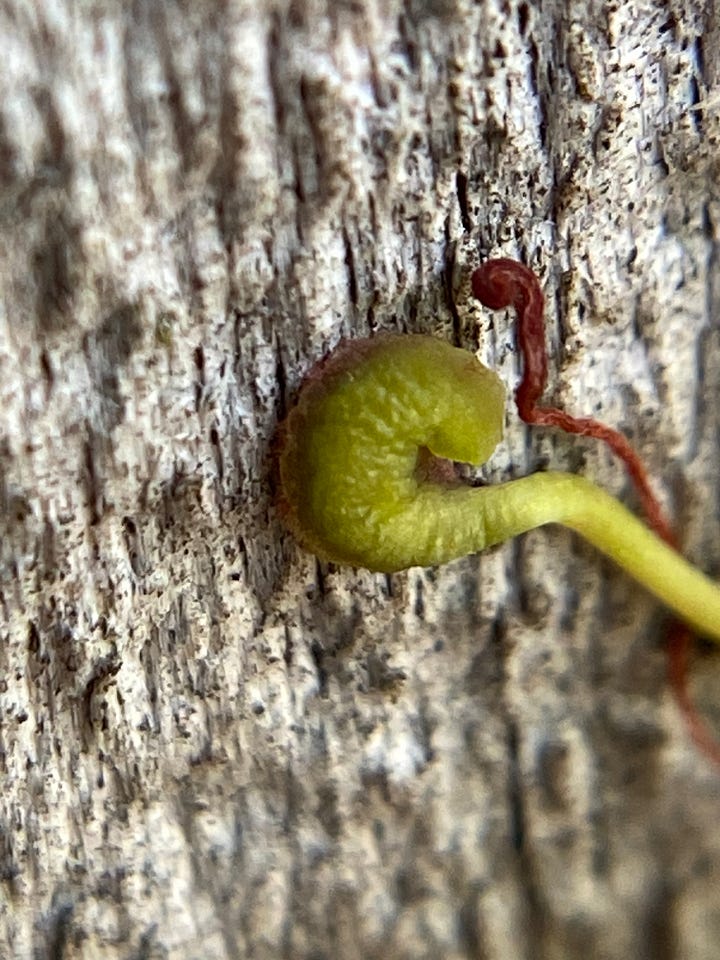
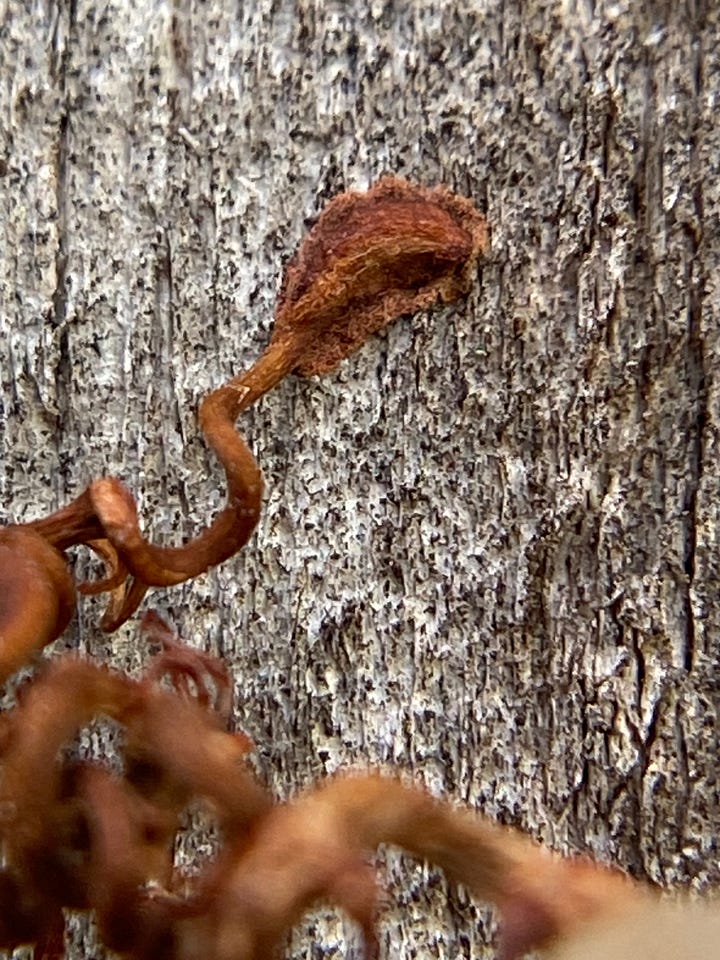
Virginia creeper uses these little adhesive feet, called holdfasts, to stick itself to surfaces. This is in contrast to other vines like English ivy, for instance, which can damage and destroy trees and buildings with its penetrating rootlets. Virginia creeper doesn’t damage the surfaces it clings to, which is clearly a point in its favor. I really want to see what the underside of those little feet look like. What’s the ‘adhesive’ property here? Is it secreting a substance that acts like a natural glue? Are the underside of the feet flat, or are there more tiny tendrils? This plant is just clinging to stuff, and I want to know, WHAT IS THIS MAGIC?
Alright, that’s probably enough for now. I’ll be watching for more color changes, and I may even look to see if I spy any moth eggs on the leaves. If you have Virginia creeper in your area, I’d love to see photos of any color changes you notice during the autumn months. Send me an email!
See ya next time!





